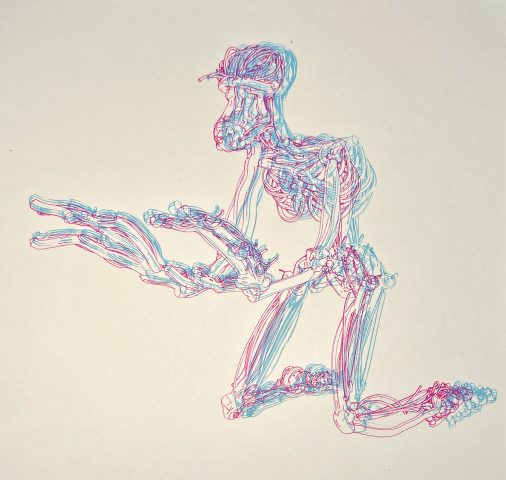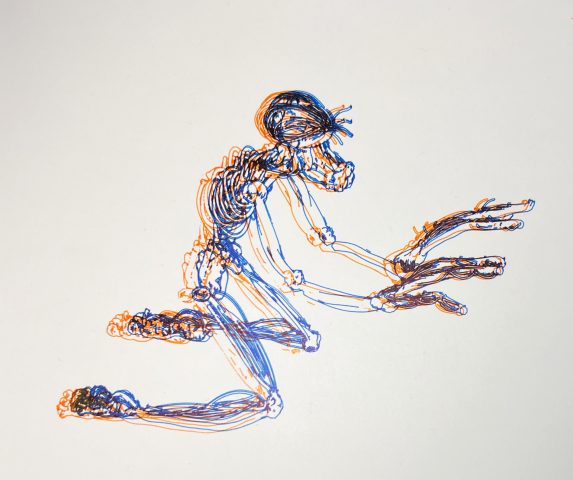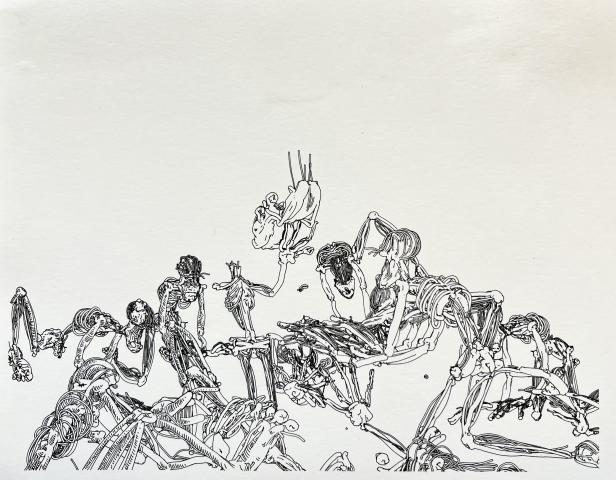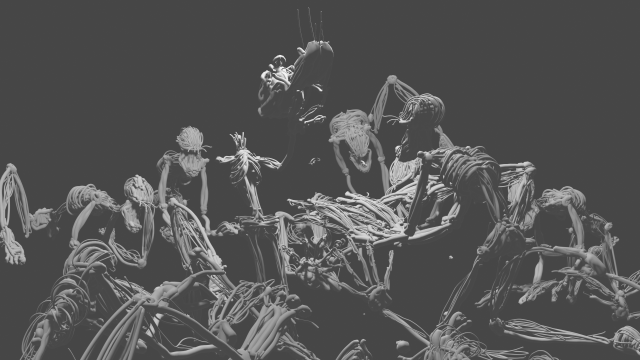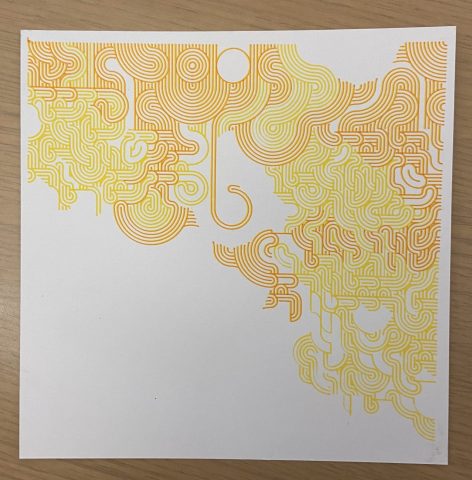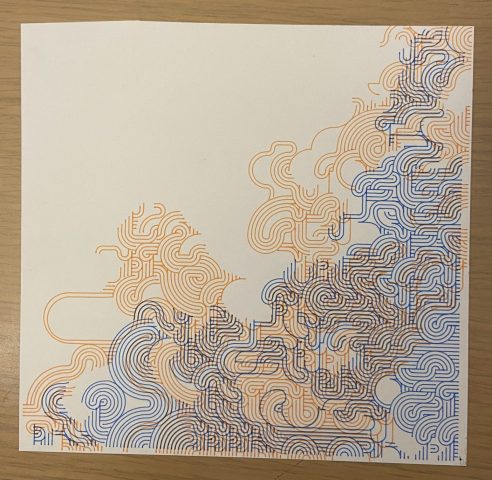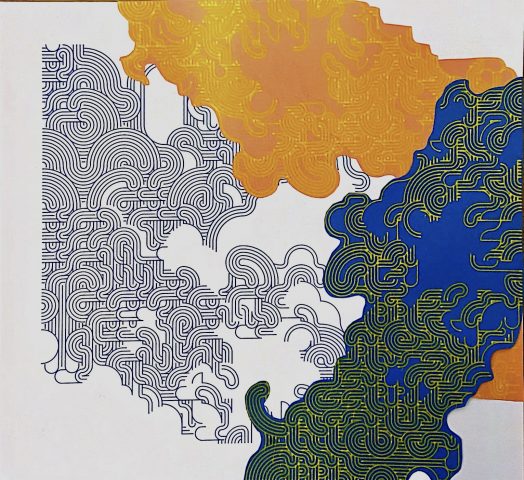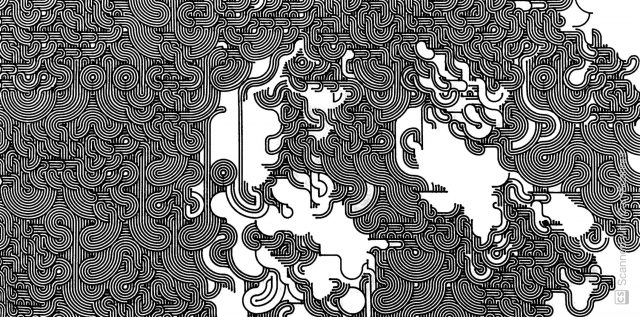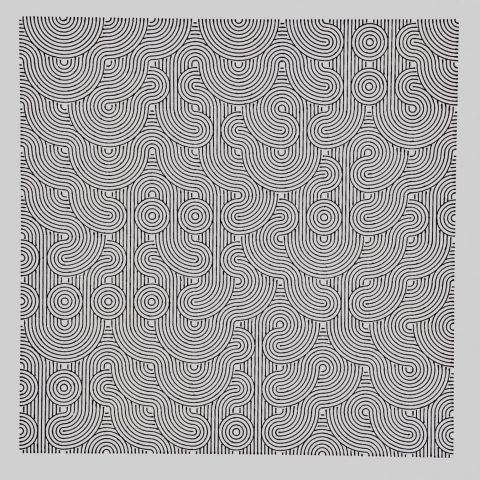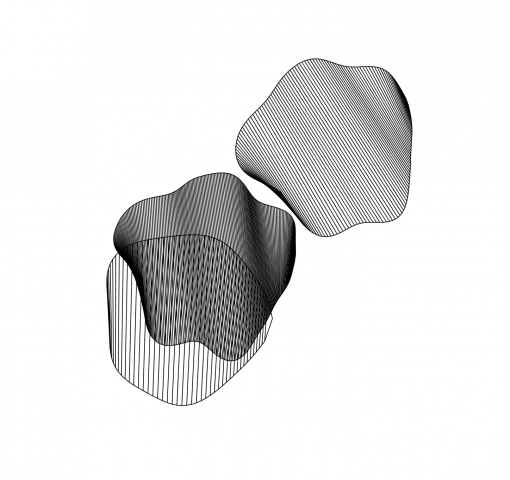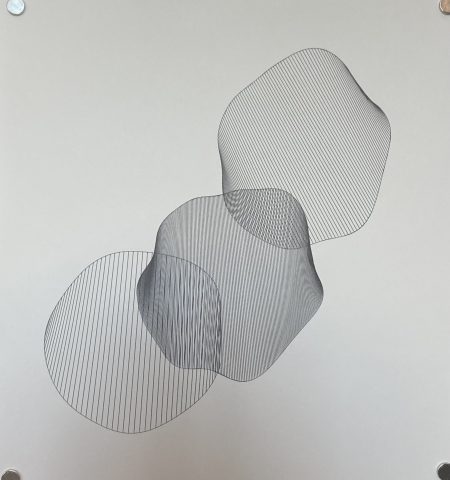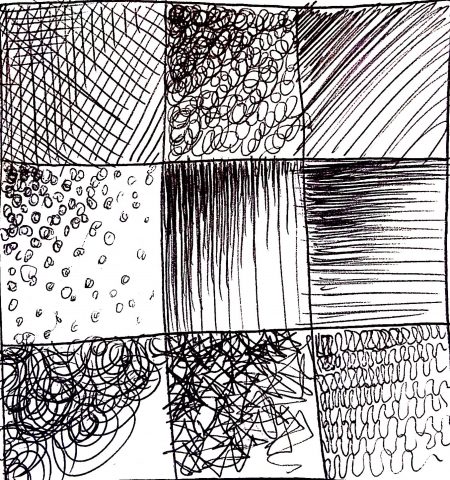
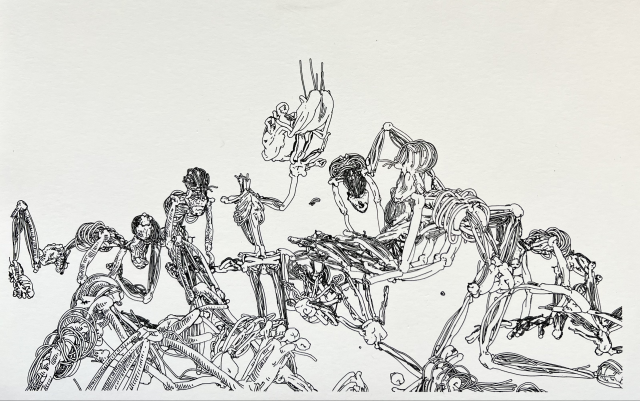
My final project for this class was a collection of several different plots of these skeleton-esque creatures in assorted configurations.
Inspiration
I am very drawn to artworks with busy, indiscernible compositions. Annabelle Gao’s Bicycle piece is a great example of this. What strikes me with these kinds of artworks is that most of its greatness/value is only found after some time has been spent appreciating the fine details.
I have also been interested in depictions of pain, longing, and any other pessimistic emotion. Kay Seyoung Lee’s hellscapes, specifically Harvest(2021), is another notable inspiration piece for me. The warped perspective is very intriguing, and I considered including this element in my pieces as well. I also love how non-distinct the subjects are.
Process
The piece began with my discovery of the Google Tiltbrush (discovery facilitated by Golan Levin). My practice usually lies in the realm of 3D CGI. However, drawing in VR gives what most 3D programs cannot do in that it allows for the act of drawing in 3 dimensions. This could be seen as a hindrance, but using this feature to my advantage, I created a skeleton-like creature made up of thin tube-like ropes:
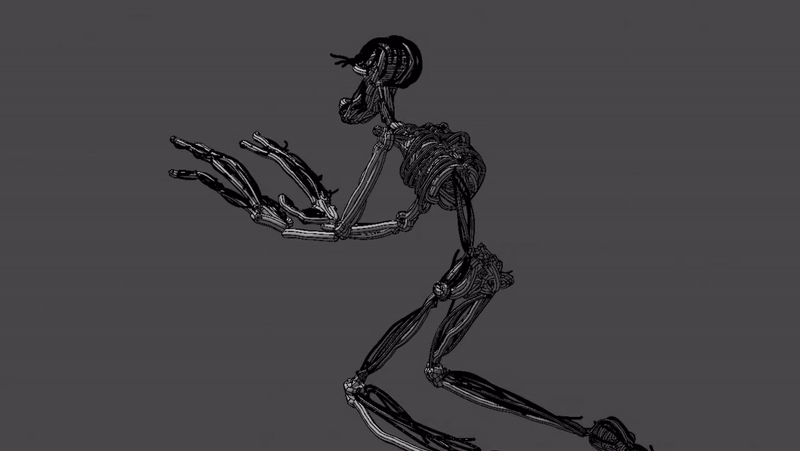
From the Tiltbrush application, I was able to export my creation into Blender. Here I was able to set up a compelling composition.

Then I exported this as a plottable SVG.
Lastly, I took the same pen the plot was done in and added some detail. This was an intriguing idea to begin with, but I got carried away. The problem here is that it missed the busy, indiscernible effect and went more towards unfinished looking. The business looks accidental here placed next to the overbearing white space.
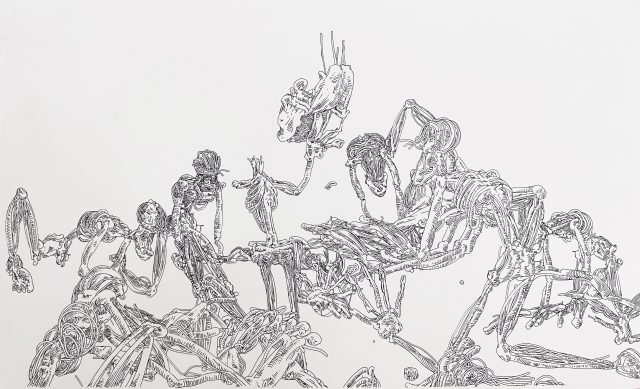
Another thing I was considering was drawing outside of the lines of the subjects in the background. This was an interesting idea as it further blends the distinction between machine-drawn and hand-drawn lines. However, my main qualm with this was that the objects I was drawing in the background did not match the original skeleton subjects. While perhaps visually similar, they themselves turned the story of the piece and made it confusing and wrong. 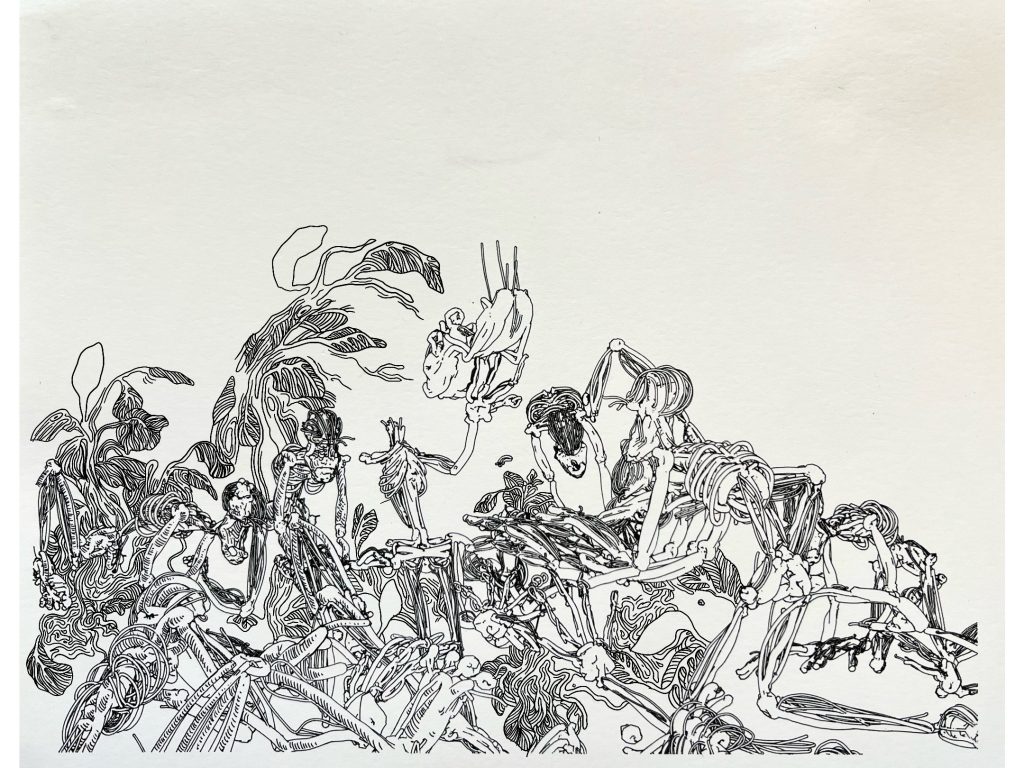
For my final composition I took care to achieve my desired busy effect, done with the help of Shiva Peri and Nikolas Diamant. The subjects were piled using physics in Blender. In a sentimental moment, or because I liked the white space, or maybe just because I was in a rush, I stopped the plot before it finished. This resulted in a nice variation of tone in the bottom half of the image to make the contrast between the top and bottom less intense.
More Images
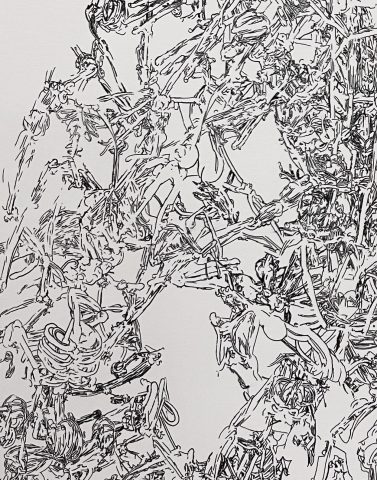

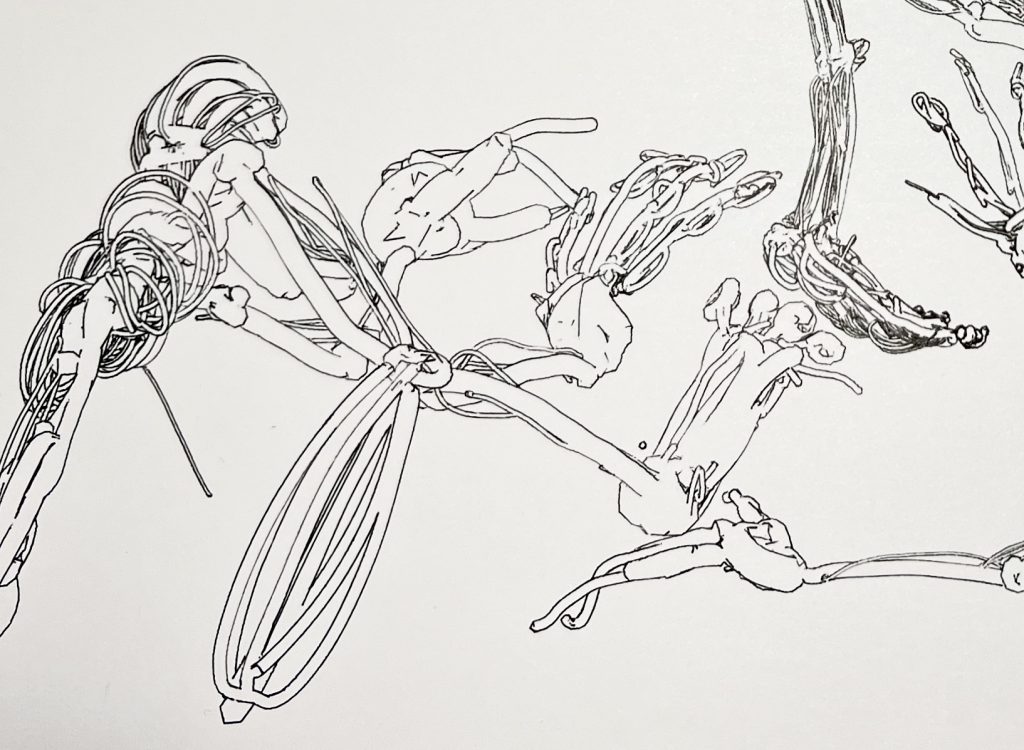
Final Takeaways
This project was influential for me personally in that it allowed me to explore the usage of machines in the drawing process without having to code. I was able to familiarize myself with one new medium rather than two at once. It also forced me to be very uncharacteristically precise and intentional with my materials, something I had to learn the hard way(evidenced by my many failed plots). Another influential aspect was the usage of Tiltbrush as a part of my creative workflow.
I appreciate that the ambiguity of the precision of the linework contrasted with the manmade feel of the subjects themselves hints at the process I went through to actually make the piece; However, I wish it was a little more clear. Overall, the entire process was very inspiring, and I am excited to see where these new mediums take me.

